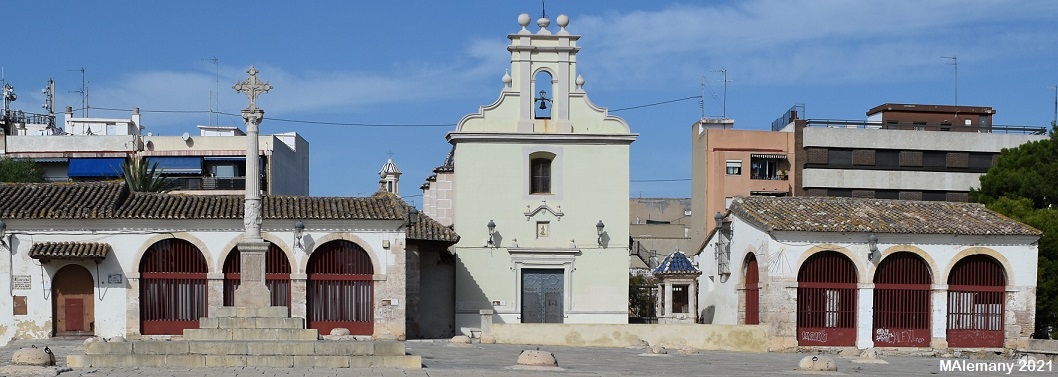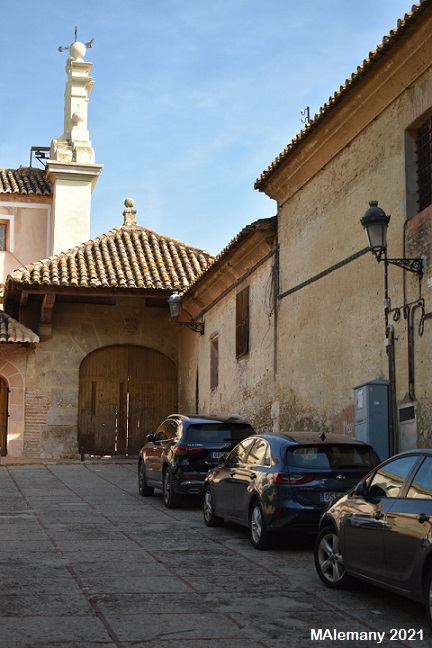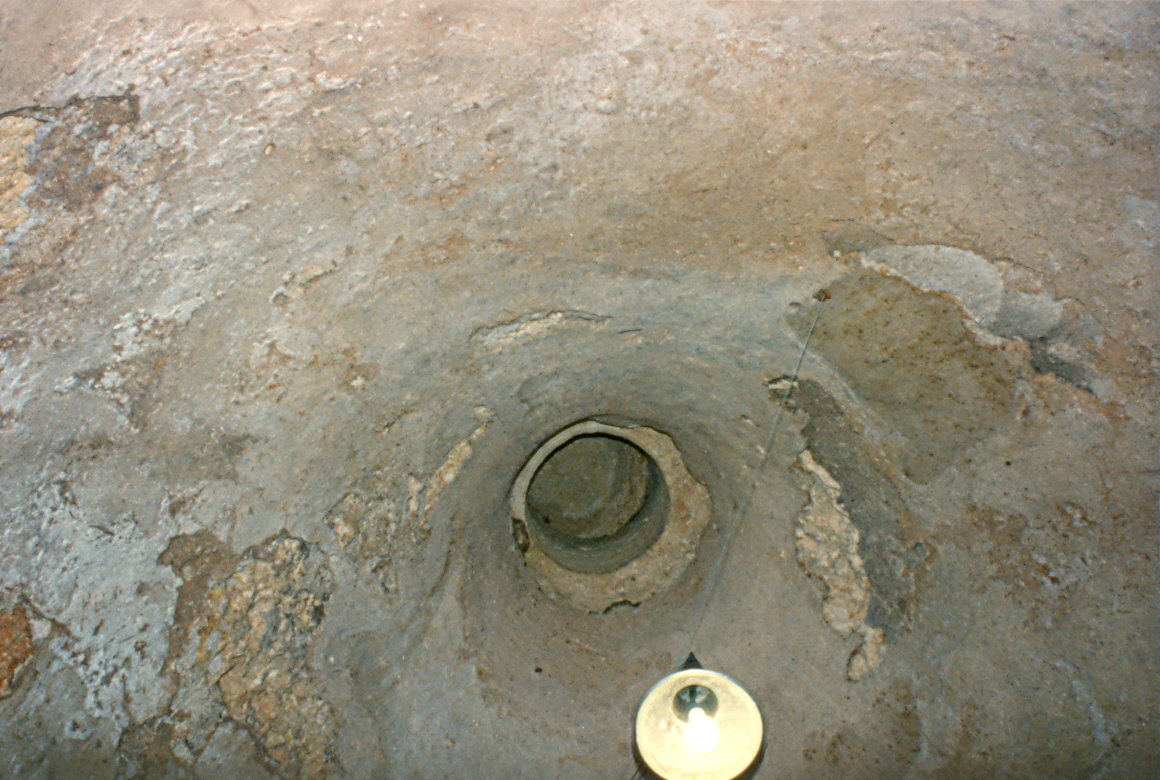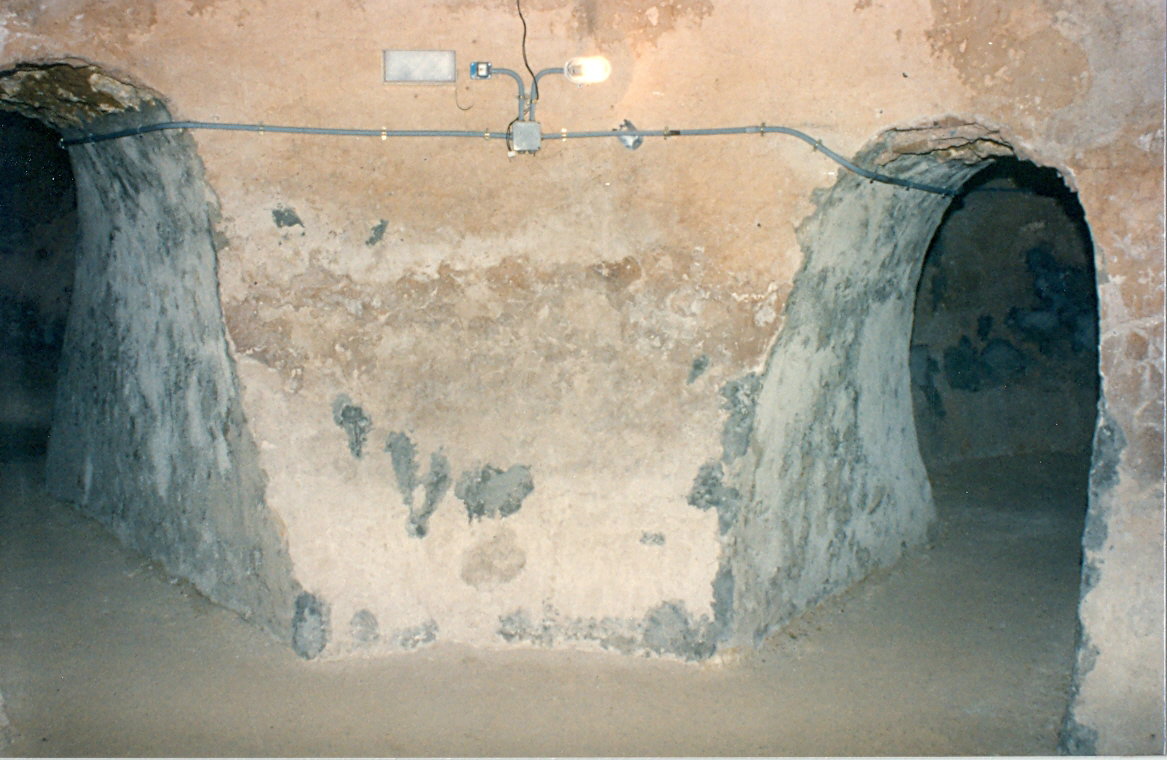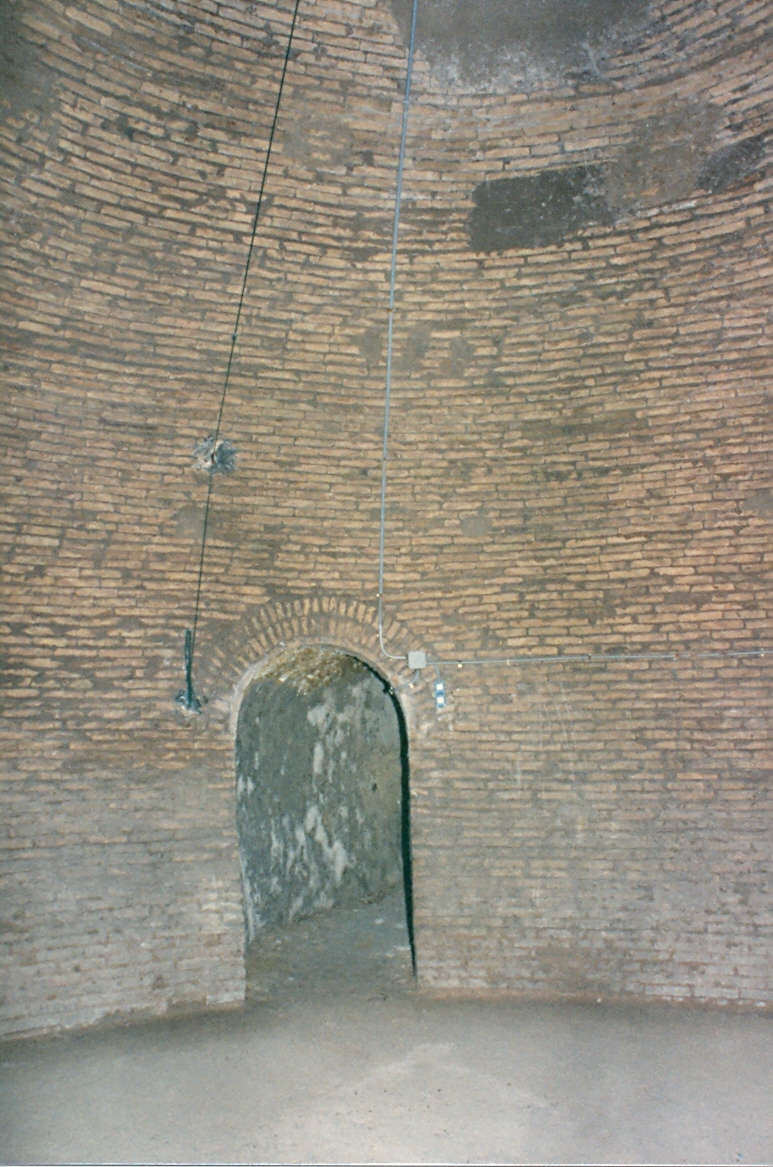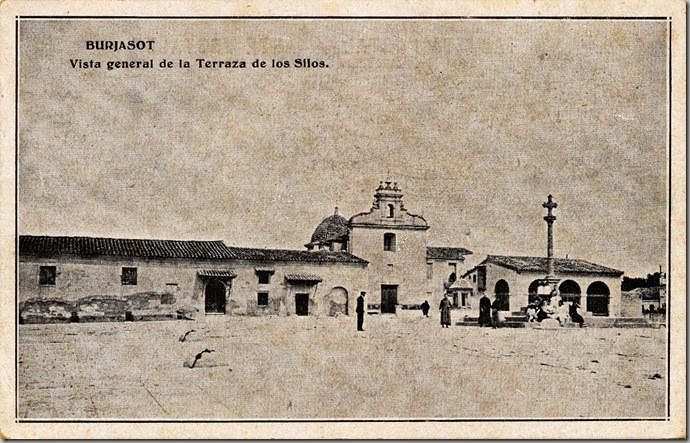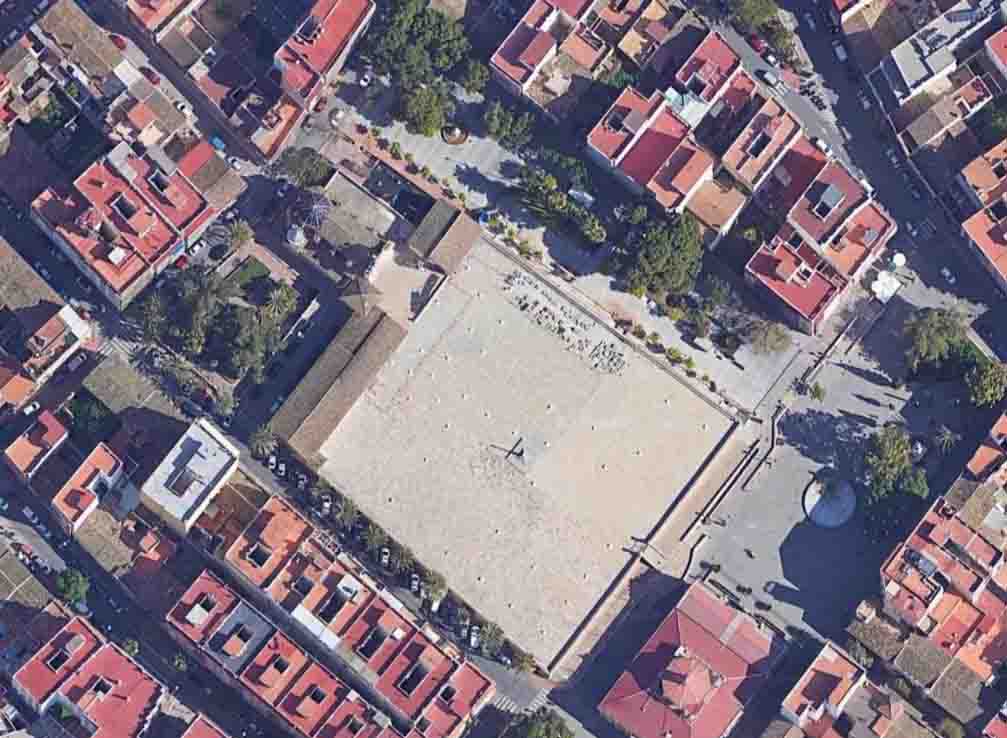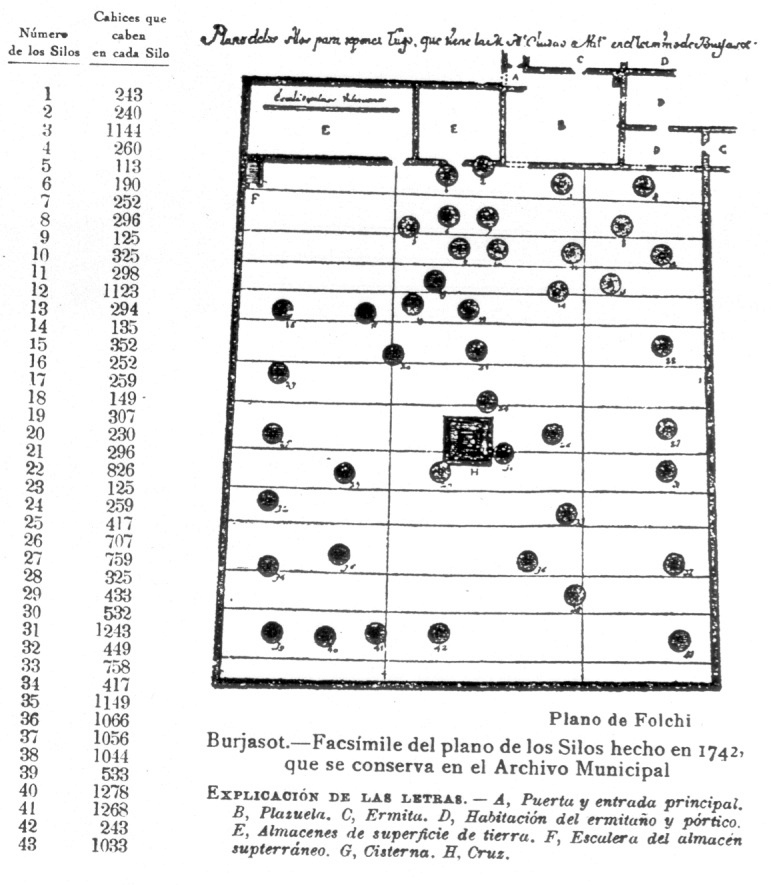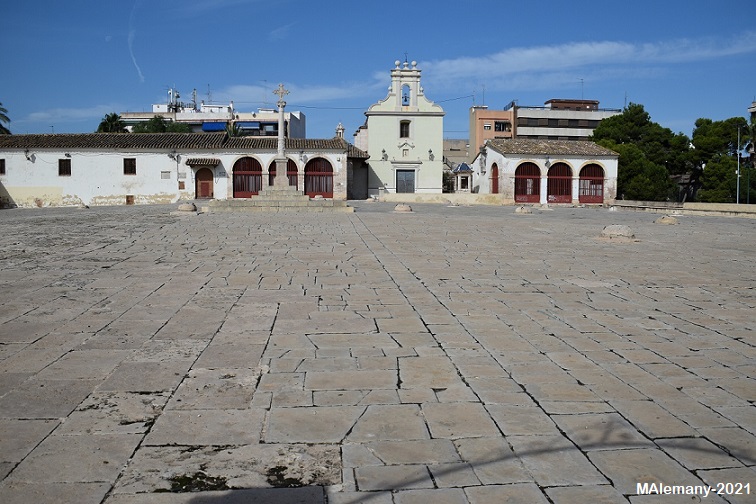
They are located in Plaça de Sant Roc and Ave. Màrtirs de la Llibertat 2 in said town.
1573 and 16th-18th centuries
According to J. L. Ros (1983), the first silos for storing cereals for the city of València were built in Burjassot in 1573, by order of the Municipal Council. Until then, the grain was kept and sold only in the granary in the capital, but in view of its deterioration due to the humidity of the city centre, it was decided to move it to a drier physical space not too far away. Some scholars had written that there were already silos in this area of Burjassot from Roman times, but there is no documentary or archaeological proof of this assertion. Those first underground silos were made as a test by a stonecutter, and in the following years at the end of the 16th century, the Council approved their extension in view of the good conservation results. In 1704 there were already 41 silos and in 1742, 43. It was at the latter date that the València City Council tried to privatise it, although the royal authority in the city, the corregidor (mayor freely appointed by the king in certain important towns), forbade it. Within the municipal structure, Silos functioned as an autonomous body with its own management and staff until 1902. Shortly afterwards, in 1907, the Valencian City Council decided to close it, considering that its function as a public warehouse for bread cereals was no longer necessary given the reality of the market at the beginning of the 20th century. During the Civil War 1936-39, the sides of several silos were cut and joined together to be used as shelters against bombing by Franco’s air force. Subsequently, they were abandoned until their heritage recovery and restoration at the end of that century. They are currently a musealised space. Despite their location in the municipality of Burjassot, they had always been property of the Municipal Council and later of the Valencian capital local government.
The silos of Burjassot are underground grain deposits excavated in calcareous soil, technically following traditions that date back to the Neolithic period. In this case, the concentration of so many silos is noteworthy, as well as their large dimensions, which is logical in any case given their service function in a large city and not in a small town. Inside, they are shaped like a large jar or pitcher with a height varying between 7 and 12 metres approximately, and a width at the bottom between 6 and 10 metres. The walls are plastered with lime mortar, although some have been repaired with tiles at several times. Its jar shape makes the interior wider and closes in a twist as it approaches the surface, leaving a much narrower manhole, around 60 cm, with a double inlet for the grain and to let the air out of the interior. The 43 silos are irregularly distributed over a more or less square open space of approximately 3,000 square metres, with a slight slope to drain rainwater, and all of it covered with large stone slabs in a work carried out in 1798 under the direction of the architect Cristòbal Sales. In the centre of this space there is a platform with steps that serves as a base for a column and a cross, built between 1579 and 1580. The cross was destroyed during the Civil War 1936-39, and replaced by a new one in 1940. On one side of the terrace, an annex building was also constructed at the end of the 16th century in the form of a market hall with its arcades, which was renovated and decorated in the 19th century. Next to it is the hermitage of Sant Roc, erected in 1605 with the permission of the archbishop Juan de Ribera, who gave the image of the Virgen María de la Cabeza which is still preserved.
Asset of cultural interest (BIC). Monument status received on 26th March 1982.
- Inventari General del Patrimoni Cultural Valencià. Conselleria de Cultura, Generalitat Valenciana, Secció 1A Béns d’Interés Cultural, fitxa: Los Silos
- Pla d’Acció Territorial d’Ordenació i Dinamització de l’Horta de València (PAT de l’Horta). Generalitat Valenciana, 2018. Catàleg annex. Element Etnològic:. EPE_09.02: Silos de Burjassot y ermita de la Virgen de la Cabeza, p. 36 (no té fitxa individual)
- Texto refundido del Plan General de Burjassot (PGOU) 2019. Catálogo de bienes y espacios protegidos. Patrimonio Arquitectónico. Ficha PA-2, pp. 120-129
- Centre d’Estudis Locals de Burjassot. Bibliografia sobre les Sigtes (Silos)
ROS I ANDREU, J. L. (1983): “Los Silos. Burjasot”, dins Bérchez, J. (dir): Catàleg de Monuments i Conjunts de la Comunitat Valenciana, vol. I, València, Conselleria de Cultura-Generalitat Valenciana, pp. 217-225.
BLANES, R. (1992): Los Silos de Burjasot (1573-1600). Un monumento desconocido, València, Consell Valencià de Cultura.
GAYANO LLUCH, R. (1948): Los Silos de Burjasot, València.
LÓPEZ LAGUARDA, J. J. (1946): Burjasot (apuntes para su historia), València.
MARTÍNEZ ALOY, J.: “Burjasot”, en F. Carreras Candi, Geografia del Reino de Valencia. Provincia de Valencia, p. 810.
EXPÓSITO NAVARRO, L. M.: “Aprovechamiento agrícola de los Silos de Burjassot”
Photos: M. Alemany, Google Earth, fitxa del Catàleg de Patrimoni de la Conselleria de Cultura, Generalitat Valenciana



